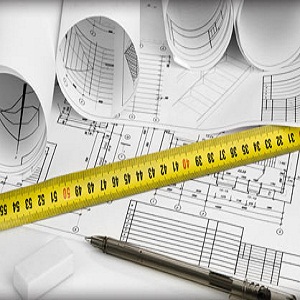Steps to Write an Engineering Dissertation

A dissertation is an important part of an engineering coursework. It takes a lot of reading, writing, analytic and presentation skills to come up with an impressive dissertation. If the course is related to engineering, it is bound to be interesting and highly analytic in nature. It is on you to select a topic that interests you and is possible to be worked upon. Dissertation requirements differ for every institution and course. However, the basic format mostly remains the same.
If you are finding it hard to write an engineering dissertation then don’t worry. We have managed to compile the perfect guide for you and it is going to help you out in writing the perfect dissertation. Simply scroll down and get all the help from the steps which we have provided.
Instructions
-
1
Area of interest:
Engineering is wide diverse field with an endless list of areas you can cover. Choose an area that you know and interests you. An engineering dissertation could be based on electrical engineering, mechanical, mechatronics, civil, chemical, environmental, architectural or any other form of the science. There are various sub-fields under these broad areas like robotics in mechatronics and automation in mechanical. -
2
A unique topic:
Choose topic that is interesting, unique, relevant to your studies and you are sure to find enough research data on it. A topic is narrower than the area of research and deals with a specific problem or hypothesis. Your topic could either discuss engineering progress of the past, present concerns or well researched speculation about the future. -
3
Proposal:
A proposal is the first formal presentation to your academic mentor and the department. Your proposal with be scrutinized for appropriateness and only then will you be given the green signal to continue work on it. You might be asked to make changes in the topic or change it altogether. This makes your proposal an important document and that is why you should give special attention to it.
Your proposal should give a brief introduction, state your hypothesis and discuss any work that you done done already. -
4
The title page:
Once you get the proposal approved, it is time to move on to the dissertation itself. The title page is the first impression of your work. It states the topic of research, your name, institute name and department details. Keep the title page simple but classy. -
5
Acknowledgments:
An engineering research or for that matter any research cannot be carried out without any help. The acknowledgment section lets you thank all the people who have helped you put it together. These could be both personal and professional contacts. -
6
Abstract:
The abstract of the dissertation is more of a summary. Highlight the important elements of your work in around 500 words in an attractive manner that sets the expectations high for the reader to go through the rest. -
7
Table of Contents:
It is a table that lists the sections and sub sections according to their page number making navigation through the dissertation easier for readers. -
8
Introduction:
The introduction of an engineering dissertation introduces the reader to the field, area of research, topic and the reason behind choosing the topic. It also states the mission statement of the dissertation and aims at building interest in the topic. -
9
Literature review:
Literature review as the name suggests highlights all the significant work that other researchers have done on the same topic or related to it. Go through the work in online journals, publications and books and include anything related in your literature review. The literature review not only gives the academic background of the topic but also hints on your approach to these previous findings i.e whether you agree with or disagree. -
10
Methodology:
The methodology of a research covers the methods you are going to employ to investigate the topic. Most engineering dissertations are quantitative. However, they can also be qualitative depending on your topic. the methodology consists of:
- primary research
- secondary research
- data collection methods (surveys, case studies, focus group)
- deductive techniques -
11
Findings:
Findings are the results that you get after conducting the research. You can use either tabular or paragraph form to list your findings in detail. -
12
Analysis:
The next step is to work on the findings and turn them into something meaningful as to how they impact your topic. This is the time to decide whether your hypothesis has been proved or falsified. It also discusses whether your results support previous work or have negated them or found an alternative solution. -
13
Conclusion:
The conclusion part is again a summary of your dissertation, this time including the results and the analysis and findings. It indicates the solution to the problem or the hypothesis and hints the need of any further research.It can also include recommendations and improvements. -
14
References:
The reference section includes a list of all the secondary literature that you accessed so that there is no question of plagiarism. APA, MLA and Harvard styles are most famous for referencing. However you can also use any other if you are familiar with the use.







